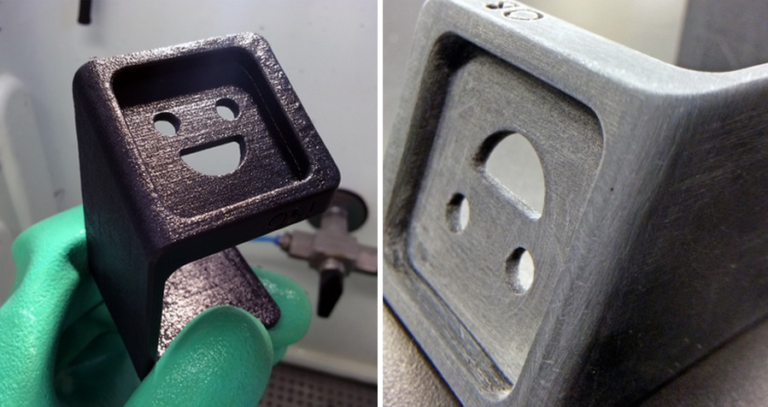3D Printing Materials
Nylon
Multi Jet Fusion (MJF)
(Multi Jet Fusion (MJF)) Grey, Black
(Multi Jet Fusion (MJF)) 0.08mm
(Multi Jet Fusion (MJF))
(Multi Jet Fusion (MJF)) $$$

3D Printing Services
Lifecycle
Lead Time
Resolution
Infill
Materials
In our network of highly vetted manufacturing partners, we have HP’s Multi Jet Fusion 4200 and 5200 machines. These machines were designed by HP as an ideal solution for industrial prototyping and final part production. The printers are unique in that they separate the process of recoating and printing/fusing during the printing stage, making it possible for each process to be separately optimized for performance.
The build unit is moved on to cool after the job is complete, allowing for a continuous printing process. Build times may vary between 8-16 hours, with cool times ranging from 2-3 times the corresponding build times. This attributes to the longer lead times when compared to PolyJet or Stereolithography processes. Parts must be allowed extra time to cool to reduce susceptibility to warping and shrinkage.
| HP Multi Jet Fusion 4200 | HP Multi Jet Fusion 5200 | |
|---|---|---|
| Build Bed Size [x, y, z] | 365 x 269 x 365 mm 15 x 11.2 x 15 in | 365 x 269 x 365 mm 15 x 11.2 x 15 in |
| Materials | Nylon 12 | Nylon 12 |
| Value | approx $200,000 | approx $350,000 |
| Building Speed | Up to 4,115 cm3/hr (251 in3/hr) | Up to 5,058 cm3/hr (309 in3/hr) |
| Consumables | Material powder, fusing agent, build trays | Material powder, fusing agent, build trays |
Nylon
Maximum Part Size
Gaps for Mating Parts
Tolerance
Min Wall Thickness
Cost Saving Tip
Printing in higher quantities to use all of the available build space is more cost-effective when it comes to MJF parts.
Multi Jet Fusion, or MJF, is a cutting edge 3D printing technology from HP that helps companies accelerate time to market with production-grade 3D printing.
The technology works by spreading out a fine layer of powder, depositing a fluid in the desired locations, and then fusing those areas. The raw powder acts as support for the parts within the build bed. Once the parts are complete, they are cooled, cleaned, and media blasted for a smoother surface finish.
MJF is ideal for bridge production quantities in the hundreds, given that the daily output is comparatively higher than other 3D printing technologies. It’s also great for functional testing and form/fit validation because of its high resolution and excellent tensile strength and heat deflection. It can even produce end-use parts and is a great transition into injection molding, since MJF parts have homogenous mechanical properties.
MJF is a versatile process leveraged by a broad range of industries including healthcare, automotive, and consumer electronics. Some common applications include prosthetics, aerospace camera enclosures, dental molds, and automotive component molds.
Learn More
Learn More

